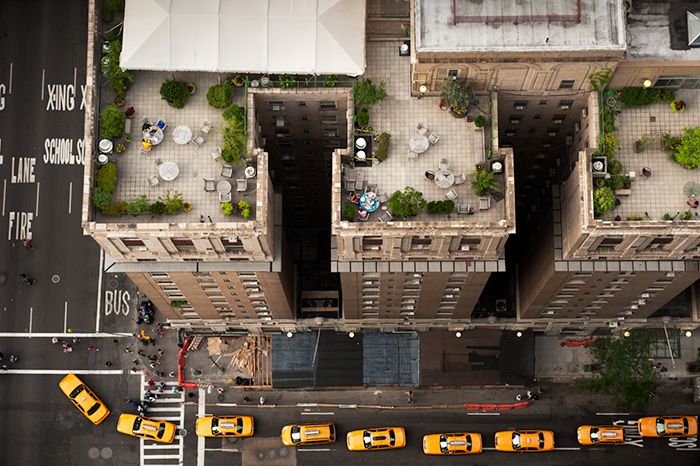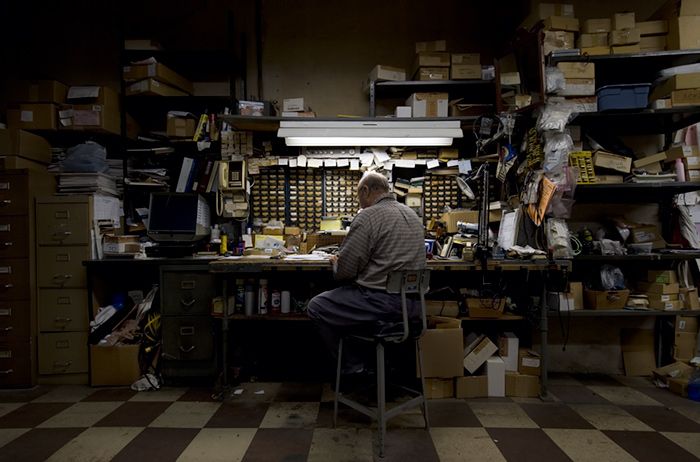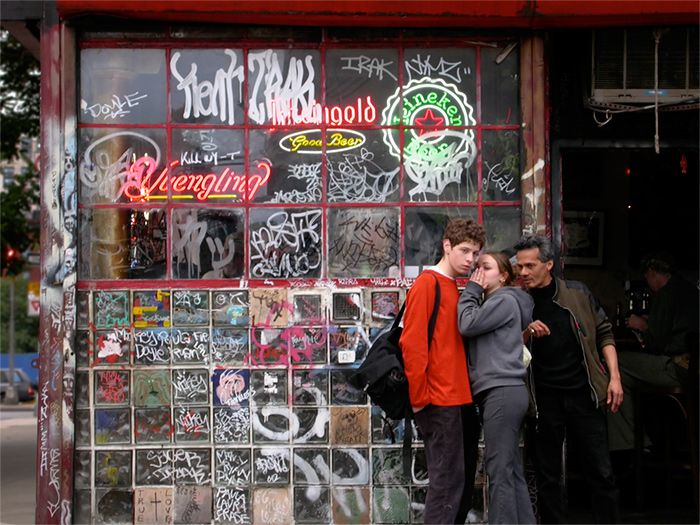blog
Interview with photographer Joseph O. Holmes
F-Stop Magazine: How did you first become involved in photography and what led to you working in this medium?
Joseph O. Holmes: My father was an avid amateur photographer and he built a darkroom into a walk-in closet in our home. By the time I was in junior high school I was loading 35mm Tri-X black and white film into canisters from bulk rolls, shooting with the family’s Miranda Sensorex SLR, and developing and printing in our darkroom. I was hooked on the whole process, and I shot black and white film for many years. I still have all of my dad’s darkroom equipment in my basement, all in working order, but it sits unused since I’ve shot only digital since 2003.
I actually started out as an art student for a time in high school and college, but at some point I decided I was just not good enough to be a painter or graphic artist. Years later, photography stepped in as a way to satisfy that need to make art.
F-Stop: You’re known for your photography of New York. What is it about the city that is so photogenic and what role does New York play in your work?
JOH: Whether my photos are specifically about New York or not, the city certainly looms large in almost all my work. I find it frustrating shooting in other towns, and I think that’s because it’s usually hard to find a way past the artificial face that many cities construct for visitors. I spent a few days in Seattle, for example, and didn’t enjoy shooting there at all because I never managed to escape the historical façade that dominates the heart of that town. It takes time to get under the skin of a city, to get past the Potemkin Village and discover the neighborhoods where peoples’ lives and work are a part of the urban landscape.
New York seems to spend a lot less energy presenting a constructed face to the world (though there are exceptions). The city feels as if it’s just too busy getting on with life to bother dressing up for the world, which makes it so much easier to make a photograph that feels like an authentic representation of New Yorkers.
If you walk down The Bowery you have to weave your way among all the used restaurant equipment being restored on the sidewalk. You can stroll through Gowanus and Red Hook and peer into the open garage doors of small industries. Manhattan’s flower district is like a tunnel through a jungle. I’m sure other cities have similar qualities, but I’ve found them rarer and harder to seek out.
F-Stop: Throughout the summer your blog focused on photos from the early days of Joe’s NYC. What prompted you to explore your previous work and how do they contrast with your current projects?
JOH: I originally started posting daily photos early in 2004, but after about 1,700 images, my site crashed one week in May 2010. And so I started from scratch by building a new blog on a new host with new software. Unfortunately, it was impossible to restore the original archives, and so none of those old photos are viewable. By posting some of my favorite photos from the early days, I’ve had the chance to revisit them myself and make them available to people who fondly remember them or never had the chance to see them the first time around.
Though years have passed since I took those early images, I still can’t view them objectively. I’m unable to see them with a fresh eye and put them into some kind of perspective to see what I might have done differently or how my photography has changed. My shooting must have evolved quite a bit, but I could not tell you how.
F-Stop: From Coney Island to your portraits of Occupy Wall Street in Zuccotti Park are there any areas of New York you have yet to explore with your photography? Is there a particular district that holds your attention?
JOH: New York City is so enormous that I’ll never get to visit all of it, but a big hole in my exploration is Queens, which I’ve barely tapped. I’m putting together a show for the Museum of the Moving Image this fall, so I’m spending a little time exploring Queens on my trips out there. There are some rich and interesting areas there.
But more than any other neighborhood, I love to revisit Soho. It’s got some of the most photogenic architecture in the city with those gorgeous cast-iron front buildings, and the narrow streets make for beautiful, soft light. And most people are surprised to hear how much I enjoy shooting around Times Square. Of course it’s gaudy and touristy, but it’s also a wacky place with surprises around every corner.
F-Stop: Is it easy to make a project about New York relatable to someone elsewhere in the world considering how well known the city is through photography and other mediums like books, film and music?
JOH: The thing I find most gratifying about shooting New York City is trying to find those scenes that defy the NYC cliches, or that add a twist to the iconic New York settings. At the same time, any image that includes a person has a kind of automatic empathy factor. That said, I’m usually thinking very narrowly, focused on the particular subject that has grabbed me and not so much on its place in the context of this city. I guess I’ve begun to take New York City for granted, which I consider a gift. That said, I’m not immune to trying to capture a classic New York City view as long as I can put my own spin on it.
F-Stop: Your collection ‘Texters’ was published in Voyeur Magazine in 2011. Does this project still capture your imagination considering the increase in mobile phones has skyrocketed since your article was printed?
JOH: I shot the “Texters” series during that little sliver of time when public texting had grown into an annoying phenomenon. We seem to have zoomed right past that period, and now that everyone on the street buries their faces in their phones, it’s no longer so novel.
I saw a similar evolution as I shot two versions of my “amnh” series. When I first took my camera to the dioramas at the American Museum of Natural History in 2005, I found visitors gazing upon the dioramas and unknowingly creating beautiful silhouettes. When I revisited three years later, people no longer stood and gazed at the dioramas. Instead they cruised the rooms with tiny video cameras or stopped just long enough to snap a photo with little digital cameras. I was so frustrated that I gave up on the amnh series and shot a new series called LCD which featured the screens of visitors’ cameras. I have a feeling that today I’d find people looking not at the dioramas, but at the view of the dioramas on their iPhones. Hey, maybe that would make a beautiful silhouette.
F-Stop: You were in exhibition earlier this year at the Jen Bekman Gallery in New York. What do you hope people see, feel or perhaps learn when they look at your photographs? What feedback or reactions have you received from your exhibitions?
JOH: I love printing, and I believe that my photos are at their best as prints, so exhibitions are really important to me. The Internet has become the de facto exhibition space for billions of photographers, but looking at a print is a completely different experience, an essential experience. I don’t believe anyone has really seen some of my most popular images until they’ve seen prints.
As for what people should see or feel or learn, I steer clear of thinking along those lines. I’ve learned that my photography practice has to spring from my own deep curiosity about a subject. I’ll discover a certain subject that fascinates me, and once I start to explore it with my eye and camera, I depend on my own compulsive curiosity to carry me through to a project’s completion. I’ve learned that if I stop to consider how a project will be received, it can poison that motivation. It’s as if I’ve fallen in love with a project and the last thing I want to hear is that it’s just a foolish crush. So the only thing I hope for when I hang a show is that I’ve tapped into some fascination with a subject that others share.
F-Stop: Do you have a favourite image from your work? If so, which one and why is it the image that speaks to you most?
JOH: Back in 2007, my wife and then 13-year-old daughter Sophia and I were staying in a hotel in San Miguel Allende, Mexico. When Sophia began leaping over and over from the bed to the window, I stood off to the side to capture that movement and that light and that joy. I can’t tell you if it’s the best photo I ever took, but it’s certain the most meaningful.
F-Stop: What photographers or other artists inspire you?
JOH: For the past few years I’ve found it hugely rewarding to shoot portraits, and I’ve been inspired by a few preternaturally talented portrait photographers: Brian Ulrich’s early thrift-store portraits, Alec Soth’s work, the street portraits of Scott Schuman, Joni Sternbach’s surfer tintypes, and Birthe Piontek’s “The Idea of North.” I never get tired of looking at fresh portraits.
F-Stop: What has been the best career advice you’ve received? What advice do you have for someone with an active interest in photography?
JOH: I once lucked into a portfolio review with one of my favorite photographers, Alec Soth. I showed Alec some of my work, which was at that time inspired by architectural typologies of the Bechers and other German artists. And after looking over my work, Alec paused for a second and then looked at me and said, “You know, you don’t seem very German to me; you seem like the kind of person who should be taking photos of people.” Good advice. That meeting turned my practice around.
The best advice I offer other photographers is to be patient. If you’re not prepared to be shooting and learning and developing for a long time just for learning’s and shooting’s sake, you’re setting yourself up for disappointment and burnout. It takes a serious investment of time to become a good photographer. Keep in mind that photography can be a gratifying part of your life for many years even if you’re never invited to hang your work in the Whitney Biennial.
For more of Joesph O. Holmes work: josephholmes.io
His exhibition at the Museum of the Moving Image takes place from October 5–February 2, 2014. More info at: www.movingimage.us/exhibitions/2013/10/05/detail/the-booth-the-last-days-of-film-projection
Events by Location
Post Categories
Tags
- Abstract
- Alternative process
- Architecture
- Artist Talk
- Biennial
- Black and White
- Book Fair
- Car culture
- charity
- Childhood
- Children
- Cities
- Collaboration
- Cyanotype
- Documentary
- environment
- Event
- Exhibition
- Family
- Fashion
- Festival
- Film Review
- Food
- Friendship
- FStop20th
- gender
- Gun Culture
- journal
- Landscapes
- large format photography
- Lecture
- love
- Masculinity
- Mental Health
- Museums
- Music
- Nature
- Night
- photomontage
- Podcast
- Portraits
- Prairies
- River
- Still Life
- Street Photography
- Tourism
- transgender
- UFO
- USA
- Wales
- Water
- Zine









Leave a Reply